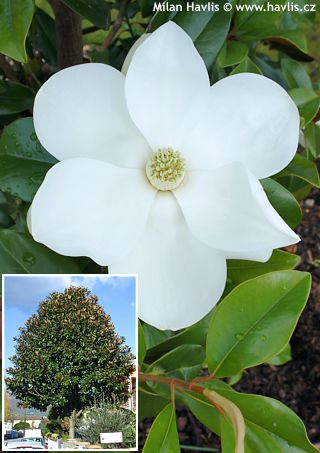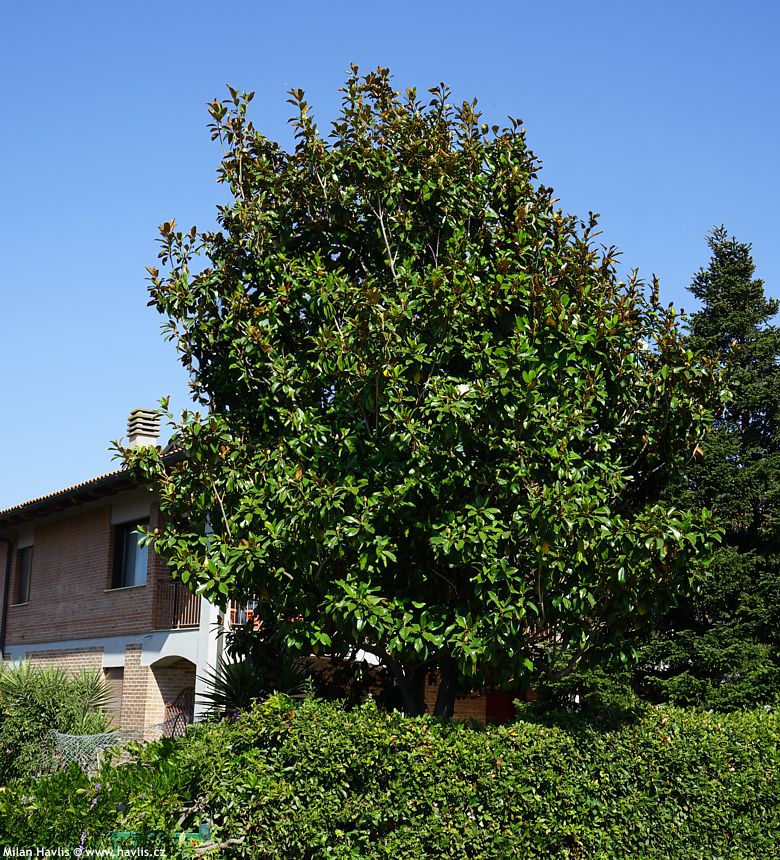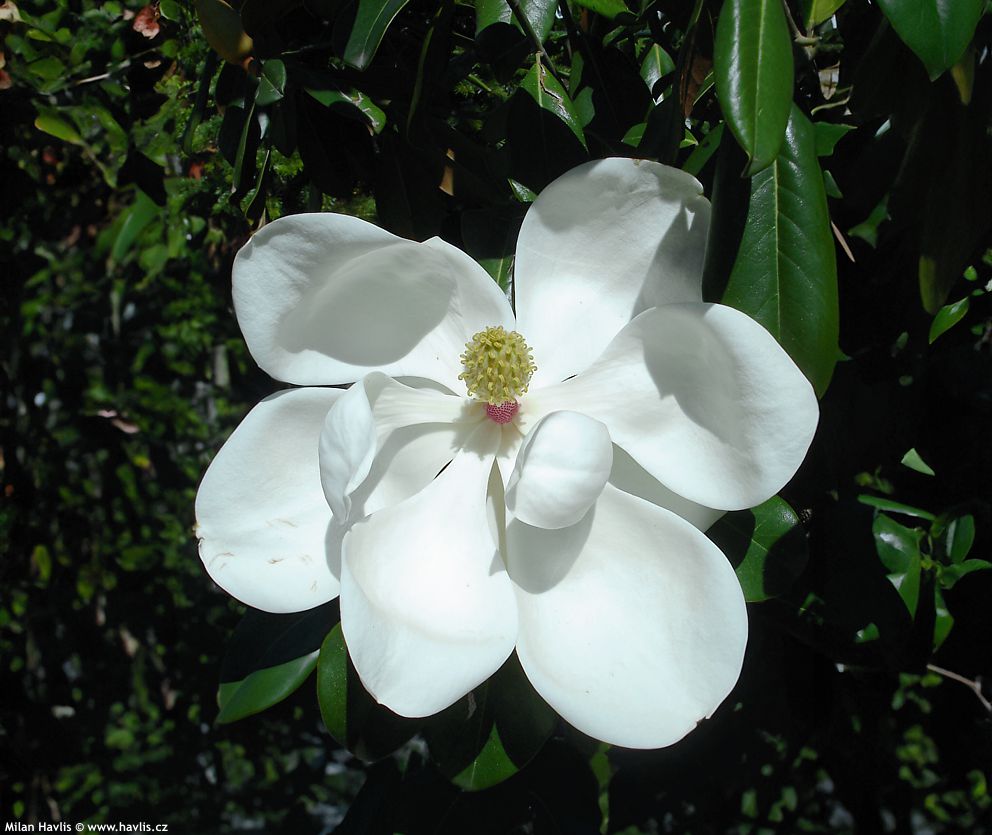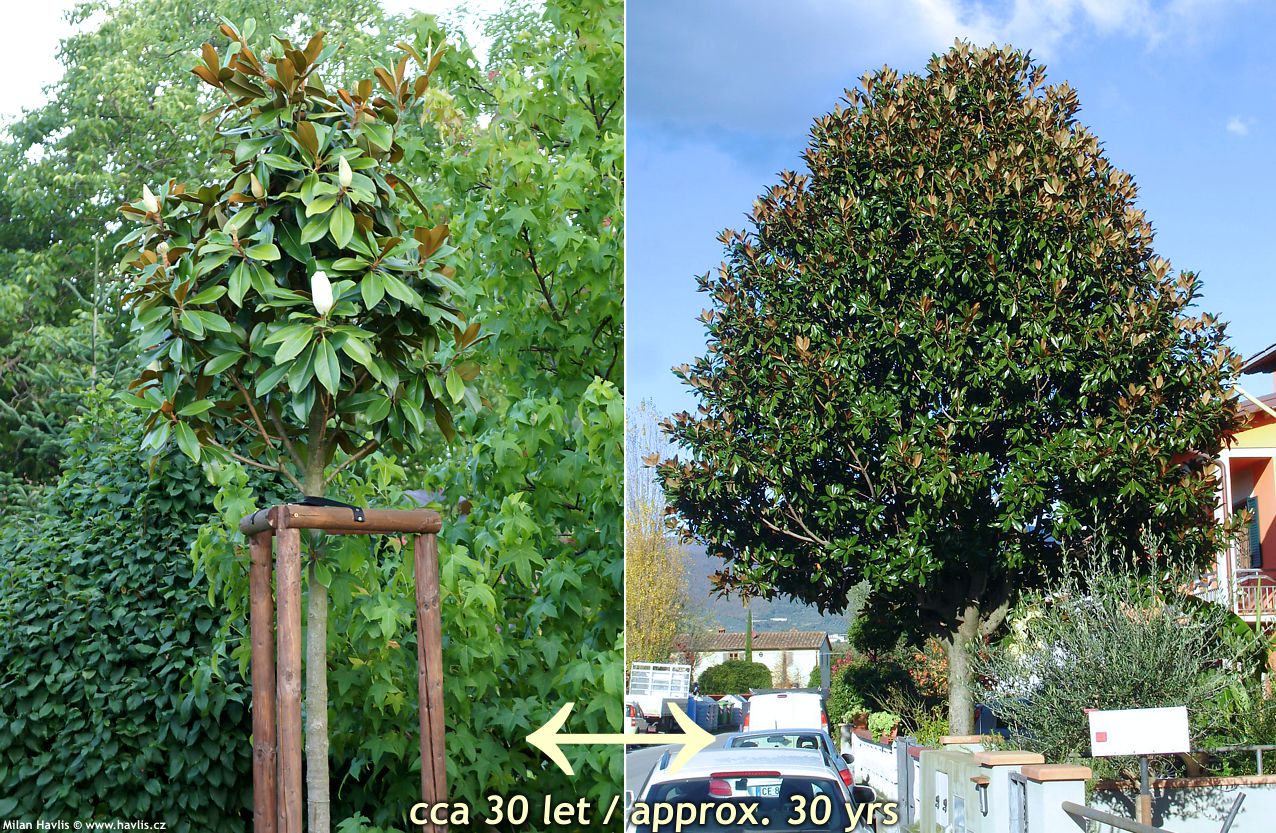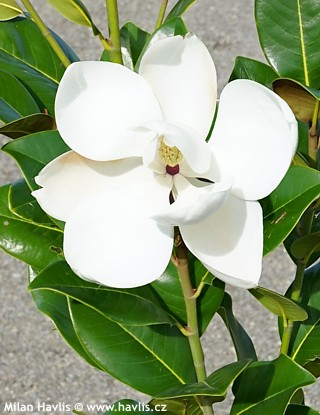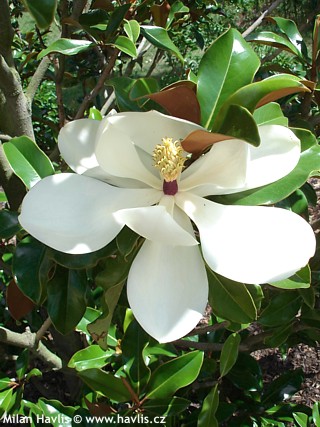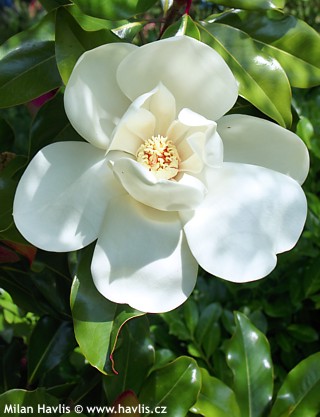Magnolia grandiflora (syn. 'Praecox') 'GOLIATH' bull bay magnolia - STANDARD TREE


Goliath is bushier and more compact growing than the species. As you can tell by its name, something’s bound to be extraordinary here. True. Its flowers are extremely large, often up to 30 cm wide, strongly fragrant and appear on the plant usually from June, often from late May if the end of spring is hot and continue blooming throughout the summer until the last warm and sunny days of autumn. This exhibits the longest flowering period among most cultivated varieties = almost 6 months. Grafted plants start flowering when only 3 years old.
The evergreen leaves are brighter green than other bull bay magnolias with a warmer shade of green. Their rusty pubescence on the undersides is not as pronounced. They tend to curl at the tips, which are more rounded compared to the species. Its habit is more compact and bushier than the species and grows to some 8 m in USDA zone 6, whereas in the south of Europe it can allegedly reach over 15 m in many decades.
The tree forms of evergreen shrubs are not only beautiful, but they have a high value especially in urban landscape as permanent screens blocking the undesired views from windows of the neighbouring houses, and that at the height that hedges rarely reach. They all need a strong support (a staking set) for the first 3-4 years from transplanting in order to establish well and the trunk was upright. Also, do not allow grass or other weeds to grow above the roots for the whole establishing period, ideally keep the trees mulched all year round.
Find it a location with plenty of direct sunlight in summer, protected from cutting winds. It does not mind winter shade and plants cultivated at the borderline of their hardiness benefit from such environment. It needs slightly acidic soil, very rich in humus, moist but well-drained. Pruning is not needed or even recommended in our climate. If you still need to rejuvenate your magnolia, do so in the middle of May – you always need to cut at least two thirds of all branches, not less, and follow that by regular fertilizing for 2-3 months.
Over the years we have tested its hardiness and are happy to conclude that it is hardier than most available European varieties, and its hardiness can be compared to those sought-after hardy magnolias from USA. It is perfectly hardy to min. -25 °C without any damage, and to -27 °C with only minor leaf damage on insolated branches. Trials have also proved sufficient hardiness to -29 °C (USDA zone 5) if protected with white fleece for the 2-3 weeks of extreme frosts. In winter provide extra watering in frost-free periods.
Last update 19-01-2009; 27-02-2024
Goods are shipped all over Europe. For Russia and U.K. and for further details please read about SHIPPING OPTIONS HERE.
Are you interested in a serious discount for orders NOV-FEB? Check your options here.
THE PRICES INCLUDE VAT of 15%. For quick conversion you can use 1 CZK = approx. 0.04 EUR
- STANDARD QUALITY - Plants of this group are 1st class quality with number of branches and overall density adequate to their size and age, considering they were container grown.
- DE LUXE QUALITY - This label guarantees a luxurious quality of manually selected plants that, compared to their height and age, are exceptionally dense and beautiful.
- EXTRA - These plants are usually mature and bigger specimens with exceptional overall appearance.
- STANDARD (as described in the plant form) means a tree with a trunk of 190-210 cm and a crown at the top, unless specified differently. The commercial size for trees is their girth measured in the height of 1m from ground.
- HOBBY - These plants are of the same quality as our standard-quality plants but younger and therefore cheaper.
- SHRUB - a woody plant with branches growing bushy from the ground level.
- HALF-STANDARD or MINI-STANDARD - a small tree with shorter trunk, its size is usually specified.
- FEATHERED - These are trees with branches growing already from the base of the trunk and up along the stem.
- GRASSES and PERENNIALS - Sizes given usually read the diameter of the pot or the clump, as specified.












